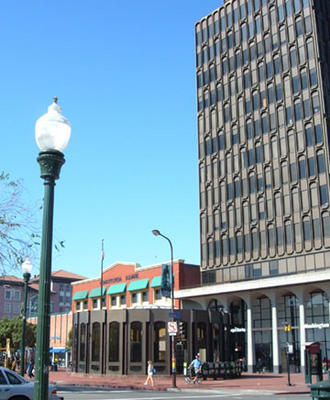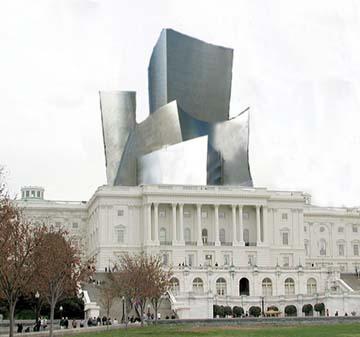Transforming American Cities
We should be building public transportation in our cities - commuter rail, light rail, and bus rapid transit - as rapidly as we built freeways in our cities after World War II. We have traffic jams because cities do not have enough room for all the automobiles: it takes ten lanes of freeways to carry as many people as one express-train track. Because it takes so much less space, transit is the most workable form of urban and suburban transportation - as well as being much less environmentally destructive than the automobile.
We should be building pedestrian and transit-oriented development near transit nodes and corridors, to provide passengers for the new transit. People are likely to use transit to commute if they live within a quarter mile of a stop. There should also be shopping and other services (such as doctors’ offices) near the transit stops, so people have the option of walking to these services rather than having to drive to them, as you do in conventional suburbs. This new should be both urban neighborhoods of apartment buildings, like those in European cities, and streetcar suburbs of single-family houses, like those built in the United States during the first decade of the twentieth century.
We should use traffic calming devices to make these neighborhoods safe and to reduce automobile use. Most people will move to pedestrian-oriented neighborhoods only if they are safe, which means that we must slow traffic down. And most people will shop locally only if we slow traffic down: with the high speeds that we have in today’s cities, many people will drive to regional malls and big-box stores to do their shopping. Studies have shown that people have a constant time budget for transportation: if they can go faster, they travel longer distances, and if they go more slowly, they travel shorter distances.
Before World War II, American cities were pedestrian and transit oriented. After World War II, the federal government spent huge sums of money on freeways and mortgage subsidies for suburban housing, transforming our cities into automobile-oriented suburban regions. There would be tremendous benefits if the federal government started to promote equally vigorous programs to build public transportation and transit-oriented development.
Our cities would be more livable. We would have fewer traffic jams and less road rage. Neighborhoods would be safer. People would be more likely to know their neighbors because they shopped locally. People would be healthier because they walked more.
We would save money. Transportation would cost less, because distances would be shorter and because walking would be a common form of transportation. Housing would cost less, because it would use less land and because we would be building so much more housing. Housing costs were low after World War II because so much new housing was built. With today’s concerns about sprawl, the only way to build this much housing today is compact, transit-oriented development.
We would be moving toward a sustainable future. Global warming has already begun, and global energy shortages are beginning. We have an obligation to build cities that will leave a livable world to future generations.
We should admit that it was a mistake to build freeway-oriented cities, and we should begin to move back toward transit-and-pedestrian oriented cities.





